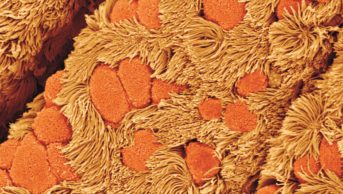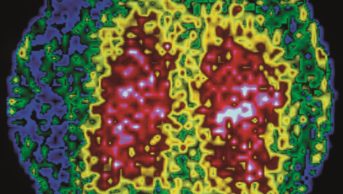
Courtesy of Lucy Lelliott
Lucy Lelliott is a non-medical prescriber and lead pharmacist for respiratory medicine and education and training at Surrey and Sussex Healthcare (SASH) NHS Trust.
What does your role involve, and how did you get to where you are now?
After graduating from the University of Brighton School of Pharmacy, I completed my preregistration training at Brighton and Sussex University Hospital in 2012. I decided to specialise in respiratory medicine in 2014, and in 2016 I assumed my current role at SASH as lead pharmacist for respiratory medicine and education and training. I attained my non-medical prescribing (NMP) qualification at the University of Brighton in the same year.
My role involves reviewing and monitoring medications for patients with interstitial lung disease (ILD). I use the skills acquired during my NMP training to deliver medicines optimisation and improve patient education in the outpatient setting. I also develop treatment plans and request blood tests for therapeutic drug monitoring.
What influenced you to pursue a career as a specialist respiratory pharmacist and non-medical prescriber?
My mother has asthma and my father was previously vice-president of Asthma UK, so there is a personal link. However, I enjoy respiratory medicine because I am able to improve patient care by advising individuals on how to identify, manage and avoid triggers associated with their respiratory symptoms. Monitoring drug therapy, providing education on inhaler technique and lifestyle advice also improves adherence and patients’ understanding of their condition and how to manage it.
Becoming a non-medical prescriber felt like a natural progression for my career and allowed me to develop new clinical skills, such as auscultation for diagnosis.
What are the responsibilities and typical tasks associated with your role?
I see patients in an ILD outpatient clinic, where I review their medication histories, discuss their associated symptoms (such as breathlessness and coughing) and perform exercise tolerance tests. I also check relevant information, such as occupation, home oxygen, smoking history (and cessation), recent flu vaccinations and antibiotics. I review their symptoms and tailor medication regimens as required, for example, introducing supplementary medications for bone or stomach protection. I then develop a treatment plan with a consultant, which is discussed and agreed on with the patient.
As lead education and training pharmacist at SASH, I also develop and monitor respiratory rotational objectives for both junior and preregistration trainee pharmacists. I provide supervision and mentorship, and demonstrate the potential roles pharmacists can have in caring for patients with long-term lung conditions.
Which aspects of your job do you enjoy the most?
I really enjoy developing rapport with patients, gaining insight into how their condition significantly affects their lives and developing workable options to help.
I recently saw a patient with pulmonary sarcoidosis on a high dose of prednisolone that I was keen to reduce to avoid long-term side effects. After ordering an urgent chest X-ray, I was able to confirm with a consultant that his condition was improving. My negotiating skills were tested because the patient felt strongly about reducing the dose quickly; however, after discussing the risks versus benefits, the patient agreed to a weaning course along with bone protection.
What is the most difficult part of your job?
I am learning to interpret common themes on chest CT scans and X-rays because I believe this benefits my patient consultations. Being able to demonstrate this newly acquired knowledge with confidence when speaking with patients is challenging because respiratory medicine is a complex area. Patients often ask to see results of their scans to better understand their condition. It is important to have a referral structure. Therefore, after each consultation I speak with a consultant to review scans and we discuss the findings together with the patient if necessary.
How has working as a non-medical prescriber affected your career?
Working in an outpatient clinic has improved my ability to speak with patients confidently, and to review treatment plans with a focus on how long-term conditions are monitored. I have gained invaluable insight into the management of long-term conditions and the importance of the patient experience. I am also an integral member of the multidisciplinary team, working closely with respiratory consultants and other healthcare professionals to improve the management of respiratory patients.
What is the best piece of career advice you have received?
Michael Wilde, a respiratory consultant I work with, advised me always to sell myself as a specialist pharmacist and never to shy away from what I have achieved. Initially, I was worried clinic patients would not want to see a pharmacist and would prefer a doctor. However, after confidently explaining my role to patients they are truly happy to be reviewed by me, recognising what I can do to benefit their condition. Sometimes as pharmacists we undervalue what impact we can have and how much patients appreciate our skills.
What advice would you give to pharmacists wishing to pursue a similar career?
Develop a core set of clinical pharmacist skills and take the time to decide what you want to specialise in. If you become a non-medical prescriber think how and where you could use this skill. Do not rush into anything and do not work beyond your limitations. I chose an area of respiratory medicine I was confident and interested in, and somewhere that uses my NMP accreditation to complement the skills of the consultants in clinic to improve patient safety. I would encourage building strong working relationships with other healthcare professionals, which can open doors to new opportunities.
You may also be interested in

Asthma therapies get personal

Asthma: long-term management
